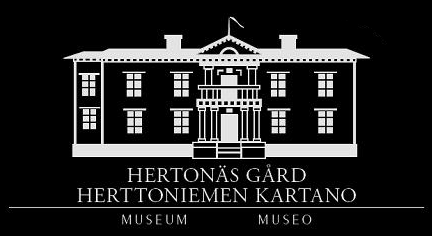.jpg)
Photography of Julle, the stallion at Hertonäs manor. (Photo: The picture archive at Hertonäs Manor Museum)
The stallion, named Julle, was a trotter of the fourth generation that had sadly been injured quite young and was not able to compete after the age of 4. Initially, the four-year-old horse was sold by its breeder to race for Solvala Hästförening, but he soon injured he´s right front foot and was not able to show what he was made of on the track. The injured foot did not heal well enough for the horse to compete again, so the stallion was redeemed by Kreatursför. Bol. i Finland. At the age of 8 he was sold to Nylands Hippos for 1000 mk, which was ¼ of he´s original value. Nylands Hippos then sold the horse to John Bergbom for 800 mk. On Hertonäs the horse was most likely used to pull farming equipment and carriages as well as for producing foals.
According to Nylands Hippos annual report from 1906, the stallion produced 17 foals during the time between 1900 and 1905. How many of those foals that stayed on the farm is unknown, but it is reported that 11 of the 35 horses on Hertonäs manor were born there.
.jpg)
Photography of a horse working the fields at Hertonäs. (Photo: The picture archive at Hertonäs Manor Museum)
The most important crop plants for Hertonäs manor were rye, barley, oats and potatoes. These were sold on the markets in Helsinki or directly to consumers who lived nearby. John Bergbom acquired modern machinery for farming, that was primarily driven by horse. However, there was also a traction engine for pulling a threshing machine on the farm. During John Bergboms time on Hertonäs manor, the arable land on the farm increased to approximately 400 hectares, which was farmable due to the new machinery and the many workable horses. Hertonäs manor also had a number of carriages that were drawn by the horses.
Sten Selin's internship at Hertonäs Manor Museum has been financed by Svenska kulturfonden.
Sources:
Hästafvelsföreningens Nylands Hippos kalender och stambok 1897 - 1906, Helsingfors 1906.S.
Backman, Hertonäs gård. Från säteri till museum, Helsingfors 2017.
